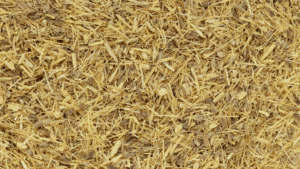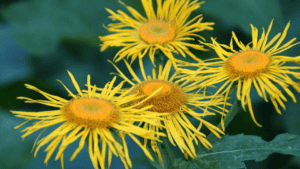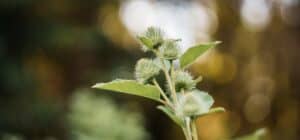Table of Contents
From a single drop to 5 mL of tincture or 1 tsp to 5 grams for a cup of tea, the range of how much of a medicinal plant to give someone is as vast and numerous as there are herbalists. Strong opinions exist on both ends of the spectrum; whether to give small amounts or large amounts, and with convincing evidence as to why that approach is “right.”
The question of dosage also greatly depends on the client’s constitution, what herbs you plan on giving, whether the condition is acute or chronic, superficial or deep in the body, and a host of other factors.
This all adds up to a sometimes very confusing and overwhelming aspect of herbalism… how much of an herb do I give?
Dosing Schools
In general, we can look at dosing from two primary orientations, or what are often considered two different schools of thought on dosing herbal medicines. I find these two different approaches to how much of an herb to give is really a reflection of our overall approach to how herbs heal a person and even gets into our overarching perception of life itself- as these two dosing schools are really best summarized as the more chemical/scientific approach, and a more vitalist/energetic approach.
The first is the “low dose school,” whereby a medicinal plant is used in tincture form in 1-5 drop doses. This form of dosage is not so much based on the premise of the chemical constituents in the plant directly affecting the body’s chemistry, but rather the vital force in the body responding to the vital force in the plant. Some might consider this a more homeopathic approach to using plants.
One of the main arguments for low dosing is that it’s a gradual way of allowing the body to reorient itself energetically in a more balanced direction. It’s not forcing the body, rather gently encouraging the body to adjust itself in a certain way. This is usually understood as shifting the body’s ecological terrain through its temperature, moisture and tonal qualities, or adjusting the constitution and tissue states.
The other side of the spectrum is the “high dose school,” which can range anywhere between 1-5 mL of tincture per dose (though opinions vary on where the line is between a high dose and a moderate dose). This approach is focused more on the biochemical influence of the plants as they operate directly on the body.
Moderate to high dosers prefer this approach as it’s a more guaranteed way of ensuring you’re getting enough of the biochemically active constituents in the body to enact physiological change. While there are certainly energetic/ecological shifts happening here as well, more often than not the approach is more focused on constituents.
Both dosing schools have reasons as to why the other approach isn’t valid. For example, many of the high dosers feel that there’s no way 1-5 drops of a plant can possibly have a physiological effect. On the other hand, low dosers often feel that high doses of plants is too forceful on the body and is overriding the vital intelligence of the system.
Factors that Influence Dosage
There are many factors to consider when giving someone an herbal medicine, and dosage is definitely critical. But unfortunately there is no one straight answer to the question. Personally, I’ve used low doses in come cases and high doses in others- it really depends on the person, the situation, and the herbs being administered.
A general rule of thumb many herbalists follow is that a good starting dosage is moderate, or somewhere in the middle; about 30 drops three times a day. From there things can be adjusted as needed based on the person, condition, constitution, and specific remedies.
I will often use higher dosages for people that have a more robust or stronger constitution, seem less inclined to be sensitive to the effects of plants, or have something a little deeper in the body that needs to be worked through. Usually lower doses will be used for clients that seem particularly sensitive to the effects of plants, have a weaker or more delicate constitution, or are wanting to work with plants for their more subtle effects on the mind, emotions, or spirit.
Another factor that’s important is the form of medicine being used. As I primarily work with spagyric forms of plants, this usually means that more physiologically oriented medicines like Spagyric Tinctures will be used in moderate to high doses (15 drops – 1 tsp), whereas preparations like Spagyric Essences are used in lower doses (1 – 5 drops) simply by virtue of their concentration and potency.
One area where it’s pretty straightforward is in regards to what are specifically referred to as “low dose plants.” These are those herbs that tread the fine line between medicine and “poison”- the main difference being that of dose. Plants like Foxglove (Digitalis spp.), Lilly of the Valley (Convallaria majalis), Poke (Phytolacca decandra), or Lobelia (Lobelia inflata) are those generally administered at lower doses (although again there are varying opinions even here, as some herbalists give remedies like Poke root in what we might consider higher doses). Higher dosages of these plants can cause discomfort (such as nausea and vomiting with Lobelia), or can actually inflict harm or death (such as with Lilly of the Valley or Digitalis). These latter two plants are for the most part reserved for advanced practitioners that also have a license to practice medicine.
Experience Dosage for Yourself!
One of the best ways to get this question of dosage clarified, is to simply experience it for yourself!
That means actually taking the herbs you study in a variety of dosages. This way you build not only intellectual knowledge of your remedies, but experiential understanding. I like to encourage herbalists to take a whole month to study a single medicinal plant. For two weeks you take it in lower, drop doses and note the effects. Then for 2 weeks you take it in a much higher dose, say 2-5 mL, 3x a day and note the effects.
When you work with a plant in this way, you really get to experience the entire spectrum of a medicinal plant’s action, how it will influence the body and constitution– not through just reading about it, but from your own experience, where you know it by heart. This is hands down the best way to learn about medicinal plants.







